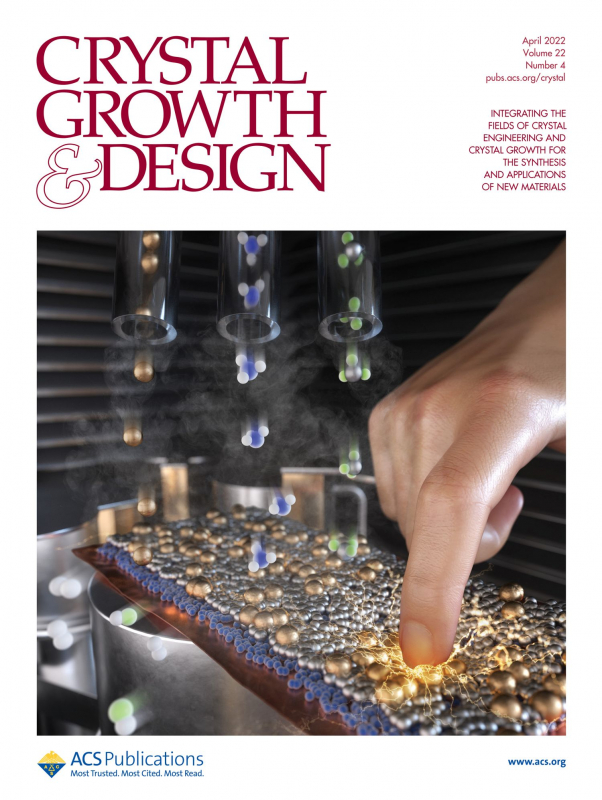A paper from the research group of Jae-Hyun Ryou, Associate Professor of Mechanical Engineering, was chosen for the cover of Crystal Growth & Design earlier this year.
“Thermodynamic Analysis of Hybrid Chemical Vapor Deposition of Transition-Metal-Alloyed Group-III-Nitride ScAlN Piezoelectric Semiconductor Films” was published in the journal earlier this year, with one of five cover options focusing on the work of Ryou's group.
Listed authors for the research include Ryou, doctoral students Mina Moradnia and Nam-In Kim, postdoctoral research Sara Pouladi, and Master's student Onosetale Aigbe. Jie Chen, a doctoral graduate of Ryou's, also contributed to the research and is now at Applied Optoelectronics, Inc. Moradnia described the work that the group did.
“We developed a new synthesis method to improve the piezoelectricity of non-hazardous piezoelectric material, to compete against commonly used hazardous PZT,” she said. “The replacement of PZT with lead-free materials has historically resulted in inferior final products, which were used in smartphone devices, mechanical energy harvesting applications and sensors, especially wearable sensors in healthcare applications.”
“Our innovation addresses the health threading concern of using hazardous lead-based materials by introducing a novel method to produce a superior piezoelectric material that is lead-free and performs higher. The advantage of our technique over the existing methods is the precise control over the composition of the material, which is very critical in enhancing the quality of the final product. This is potentially paving the way for great innovations in sensor and wireless communication technologies.”
Moradnia detailed the group's efforts, noting that they worked on the paper and research for more than a year.
“The idea of the work comes from serious concerns about the performance of piezoelectric material for sensor devices, especially for biomedical and personal healthcare applications,” she said. “Our effort has been focused on the enhancement of piezoelectricity of the material to be used in motion-sensing applications. The sensor devices based on this material should offer several advantages of high sensitivity, rapid response time, simple structure, reliable operation, be lightweight, and provide low power consumption.”
Ryou identified Moradnia as doing strong work on this paper, and in 2021, she likewise was one of the primary authors for research on semiconductor improvement. She expects to complete her doctorate in Fall 2022. She is still open to a variety of career options going forward, although she'd like to continue in a research role.
“This is my last year of Ph.D. study,” she said. “While I am still evaluating my career options, my goal is to continue working on leading-edge research of high-tech semiconductors, either in an industry or academic position.”

